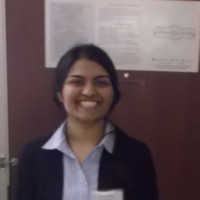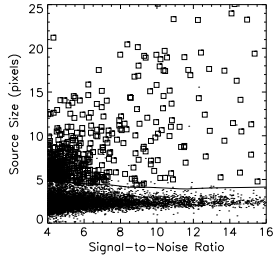About Me

Welcome! I am a graduate student at the University of Oklahoma, in the Homer L. Dodge Department of Physics and Astronomy. I am interested in the extra-galactic universe - active galactic nuclei, blazars, galaxy clusters, and the large-scale structure. I work with my advisor Dr. Xinyu Dai, and my peers in the research group, Saloni Bhatiani, Brett Bonine, and Eduardo Guerras. I am a member of the ASAS-SN collaboration.
Research
AGN-large-scale structure connection
My research work lies in the areas of active galactic nuclei (AGNs), galaxy clusters, and the interactions between AGN and the large-scale structure. AGNs are the galaxies that host compact central engines which are actively accreting supermassive black holes, and they are the most luminous continuously emitting objects in the universe. I am interested in studying the role of large-scale environment in the evolution of these galaxies and the co-evolution between galaxies and the supermassive black holes that they host. I investigate the effects of large-scale environment on AGN activity by comparing the AGN occurrence in over-dense and under-dense regions, galaxy clusters and cosmic voids, respectively, and through cosmic time (as a function of redshift). I use large multiwavelength datasets to perform statistical studies to look at AGN fractions relative to different environments. In our previous work, we find a lower abundance of AGNs in galaxy clusters compared to their relatively low-density surrounding field regions at z=0-0.5, for low-mass and high-mass clusters (left image below; Mishra & Dai 2020, AJ). We also find a gradual increase in AGN fraction as we move away from the center of the cluster toward the infall region. The right image below shows this evolution for one redshift interval, z=0.2-0.3 (Mishra & Dai 2020). I have also studied the AGN behavior in cosmic voids using spectroscopic datasets from optical surveys, such as the SDSS and SDSS BOSS (Mishra et al. 2021, ApJL).
Changing look AGNs
My work also involves time-domain astrophysics with blazars (radio AGNs). I study the short and long time-scale photometric and spectral variability exhibited by blazars, in particular, changing look blazars, where the variations are so dramatic that they lead to a change in classification. Changing-look blazars [AGNs] are crucial to understand the jet physics and jet-disk connection, which can provide useful insight into AGN and galaxy evolution (via feedback). One such object I have investigated is the blazar, B2 1420+32 which showed dramatic spectral variability in the optical (Mishra et al. 2021, ApJ).

X-ray galaxy clusters
Lastly, I work on galaxy clusters. Galaxy clusters are the most massive gravitationally bound objects in the universe and form the overdensities we see in the large-scale structure. I am currently working on expanding the SWIFT AGN and Cluster Catalog (Dai et al. 2015) that contains X-ray selected clusters. The image on the right shows the sizes of point and extended sources as a function of the signal-to-noise (Dai et al. 2015). Extended sources are selected based on a source size cut. Current expansion of the previous catalog will include number of extended sources about an order of magnitude higher (Mishra et al. 2021 In Prep).
Outreach
I am the President of Lunar Sooners, an Astronomy outreach organization at the University of Oklahoma. We promote Science and Astronomy education throughout the state of Oklahoma and organize Astronomy events at educational institutions (K-12 schools, community colleges), public libraries, for scouts groups etc. As part of our outreach, we organize star parties, planetarium shows (soonertarium), Physics and Astronomy demostration days, Q&A panels, public lecture series.
You can find my CV here.